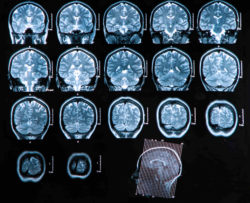Top Class Actions’s website and social media posts use affiliate links. If you make a purchase using such links, we may receive a commission, but it will not result in any additional charges to you. Please review our Affiliate Link Disclosure for more information.

The cerebellum sits behind the brain stem and controls muscle coordination and balance, according to the National Institute of Health. It affects the brain’s ability to send signals to the spinal cord and also affects the brain’s overall ability to effectively communicate with the central nervous system.
Genetic vulnerabilities to drug toxicity can cause cerebellar atrophy. In particular, popular antiepileptic drug Dilantin (phenytoin) has been linked to cerebellar atrophy for decades.
According to a study from Neurology Archives, doctors analyzed over 30 epileptic patients and noted their cerebella were significantly smaller compared to patients not exposed to phenytoin.
There have been several studies conducted since then, including one 2003 inquiry that indicates long term phenytoin exposure could increase the chances of cerebellar atrophy. It has even been suggested that children prescribed phenytoin based medications may be at risk for developing this condition.
Dilantin works by slowing down the electrical signals in the brain, which helps prevent the onset of seizures. However, the treatment mechanism has been allegedly increasing the chances of cerebellar atrophy.
Dilantin is one of the most well known antiepileptic medications in the United States, which makes its alleged correlation with cerebellar atrophy very troubling. Here are some frequently asked questions phenytoin patients and other concerned consumers have asked:
What are the most common causes of cerebellar atrophy?
While the potential cause of cerebellar atrophy ranges between patients, these are generally considered the most common contributing factors according to the Mayo clinic:
- Head trauma (especially to the brain and spinal cord)
- Stroke
- Cerebral palsy
- Autoimmune diseases (multiple sclerosis and other conditions that can cause ataxia)
- Infections
- Paraneoplastic syndromes (rare degenerative disorders triggered by the body’s immune system’s response to a malignant tumor)
- Brain tumor
- Toxicity reaction
- Heavy metal poisoning
- Alcohol and drug intoxication
- Vitamin E, vitamin B-12, or thiamine deficiency
What are the common risk factors for cerebellar atrophy?
Generally, if patients engage in unhealthy habits like heavy drug and alcohol consumption or participate in high risk behaviors that can result in head injuries.
Other patients that may be at risk could have certain genetic vulnerabilities like Multiple Sclerosis, or are at higher risk for developing brain degenerative diseases like Alzheimer’s.
Furthermore, medications including phenytoin have been linked to increased risk of cerebellar atrophy.
What are the symptoms of cerebellar atrophy?
The signs and symptoms of cerebellar atrophy include:
- Unsteady or lurching walking gait, which often includes a back and forth tremor
- Slow, unsteady, jerky movements in arms or legs
- Slow and slurred speech
- Memory loss
- Nystagmus (small rapid eye movements)
Is there a cure for cerebellar atrophy?
No, but the symptoms can be mitigated. The treatment recommendations will vary between patients, with most involving physical therapy. However, some symptoms of certain non genetic forms of cerebellar atrophy can be reversed if the underlying cause is treated.
For example, nutritional deficiency or alcoholic induced cerebellar damaged could be alleviated with dietary supplements, depending on what the doctor recommends.
In general, phenytoin lawsuits are filed individually by each plaintiff and are not class actions.
Do YOU have a legal claim? Fill out the form on this page now for a free, immediate, and confidential case evaluation. The attorneys who work with Top Class Actions will contact you if you qualify to let you know if an individual Dilantin lawsuit or Dilantin class action lawsuit is best for you. Hurry — statutes of limitations may apply.
This article is not legal advice. It is presented
for informational purposes only.
ATTORNEY ADVERTISING
Top Class Actions is a Proud Member of the American Bar Association
LEGAL INFORMATION IS NOT LEGAL ADVICE
Top Class Actions Legal Statement
©2008 – 2024 Top Class Actions® LLC
Various Trademarks held by their respective owners
This website is not intended for viewing or usage by European Union citizens.
Get Help – It’s Free
Join a Free Dilantin, Phenytoin Cerebral Atrophy Class Action Lawsuit Investigation
If you or a loved one were injured by Dilantin/phenytoin side effects, you may have a legal claim. Fill out the form for a free case evaluation.
An attorney will contact you if you qualify to discuss the details of your potential case.
PLEASE NOTE: If you want to participate in this investigation, it is imperative that you reply to the law firm if they call or email you. Failing to do so may result in you not getting signed up as a client or getting you dropped as a client.
Oops! We could not locate your form.












